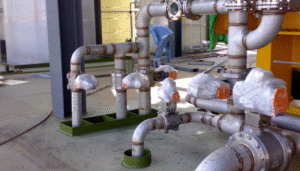Ever taken a sip of water straight from the tap and felt like you accidentally licked a coin? It’s one of those odd, slightly unsettling moments where something as simple as drinking water suddenly feels… off. Water is supposed to be clean, crisp, and tasteless — so when it starts carrying a metallic tang, it’s natural to wonder what’s going on. Let’s talk about that strange flavor and what it’s trying to tell you about your plumbing, pipes, and water quality.
The Unpleasant Surprise in a Glass
If your tap water tastes metallic, it can make your morning coffee taste weird, your cooking feel different, and even your hydration routine feel like a chore. The metallic taste isn’t just in your head — it’s often caused by the presence of certain metals in the water, like iron, copper, zinc, or manganese. Sometimes it’s harmless; other times, it’s a small red flag that something might need checking.
Municipal water systems and well water alike can both be culprits. Old pipes, corrosion, or even a temporary chemical imbalance in your water supply can change how it tastes. But identifying the exact reason usually takes a bit of detective work.
Common Causes Behind the Metallic Taste
Let’s break it down. That metallic taste might be coming from one of several sources — some serious, some not so much.
- Iron and Manganese:
These naturally occurring minerals often find their way into groundwater. A little isn’t usually a problem, but when the concentration gets high, your water can taste like it’s been stirred with a nail file. - Copper or Zinc:
If your plumbing system uses copper pipes, corrosion can release copper particles into your water. Similarly, galvanized pipes may leach zinc or lead, especially if your home’s plumbing is a few decades old. - Low pH Levels:
Acidic water (with a pH lower than 7) tends to corrode metal pipes more easily, causing that telltale tang. It’s a silent issue — you won’t see the corrosion happening, but your taste buds will pick up the signal. - Temporary Flushing or Maintenance:
Sometimes, cities flush their water systems to clear out sediment. That short-term disturbance can stir up mineral deposits, temporarily changing the flavor of your water.
When Filtered Water Still Tastes Metallic
Now, here’s the twist that confuses people the most: sometimes you install a fancy filter, expecting crystal-clear, perfect water — and yet why does my filtered water taste like metal?
The answer often lies in the type of filtration system you’re using. Carbon filters, for instance, can remove chlorine and improve smell but might not catch all dissolved metals. If the filter cartridge is old or improperly installed, it could even contribute to the taste itself.
In other cases, if you’ve recently installed a new system, the metallic flavor could be coming from fresh components (especially stainless steel fittings) that need a few flushes before they settle. It’s frustrating, sure — but not always a reason to panic.
Health Considerations You Shouldn’t Ignore
Most metallic-tasting water isn’t toxic — but it’s not something to ignore either. The presence of certain metals like lead, for example, can pose serious health risks, especially for children and pregnant women. Lead rarely gives off a noticeable taste, which makes any strange metallic note in your water a reason to double-check things.
If you notice a persistent metallic taste when drinking water, consider testing it through a certified lab or a local water authority. Many areas offer low-cost or even free testing programs for homeowners. It’s the most reliable way to figure out whether it’s just iron or something more concerning like copper corrosion or lead contamination.
Simple Fixes and Smart Solutions
Before calling in a plumber or swapping out your entire filtration system, there are a few simple checks and fixes worth trying:
- Run your tap for a minute or two in the morning before using the water. If the metallic taste fades, it might just be water sitting in your pipes overnight.
- Replace old filters — even if they’re rated for long-term use. Sediment and mineral buildup can compromise efficiency fast.
- Inspect plumbing materials. If your home was built before the 1980s, it might still have lead or galvanized steel pipes. Modern copper or PEX plumbing can make a big difference.
- Install a whole-house filter that targets heavy metals, not just chlorine or sediment.
- Balance your water’s pH — a water treatment professional can help with that if corrosion seems to be the root cause.
Sometimes, it’s as simple as cleaning your faucet aerator, which can collect mineral deposits that alter taste. Little details like that can go a surprisingly long way.
When to Call a Professional
If you’ve tried everything and the problem persists, it might be time to bring in a licensed plumber or water specialist. They can identify whether the issue stems from your internal plumbing or the broader water supply. For homes with private wells, professionals can test the groundwater directly and recommend treatment systems that actually match your water chemistry — not just a one-size-fits-all filter.
The Taste Test That Tells a Story
The taste of your water can reveal more about your home than you think. Whether it’s aging pipes, neglected filters, or just mineral-rich groundwater, that metallic tang is trying to tell you something. The key is to listen — and not just mask it with lemon slices or ice cubes.
So, the next time your water tastes a little off, don’t shrug it off as imagination. There’s always a reason, and usually, it’s something fixable. Clean, neutral-tasting water isn’t a luxury; it’s a sign that everything behind your tap is working the way it should.
Sometimes, fixing the smallest taste issue means uncovering a bigger story about your home’s plumbing — and making sure the water you drink every day is as pure as it’s meant to be.


